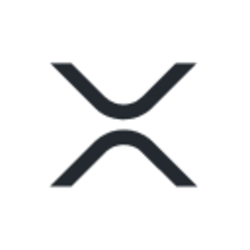- Ripple’s president, Monica Long, states that the lawsuit has concluded, giving XRP significant regulatory clarity.
- The launch of the RLUSD stablecoin is awaiting regulatory approval from the United States.
- The new stablecoin will not encroach on XRP’s market share within the payment industry.
- Ripple identifies extensive possibilities, including enhanced programmability on the XRP Ledger (XRPL).
Dive into the latest developments with Ripple as it emerges victorious in the SEC lawsuit, eyeing the launch of its RLUSD stablecoin, and strategizing future enhancements for the XRP Ledger.
Ripple Emerges Triumphant Over SEC in Landmark Case
The legal battle between the U.S. Securities and Exchange Commission (SEC) and Ripple Labs has finally reached its conclusion. The judiciary has ruled definitively that XRP is not a security, marking a pivotal win for Ripple and setting a significant precedent for the entire cryptocurrency industry. Monica Long, Ripple’s president, emphasized that this outcome brings much-needed regulatory clarity, especially in a rapidly evolving financial landscape.
Global Expansion and Regulatory Challenges
Despite this victory, Ripple continues to face regulatory obstacles within the U.S. which had previously compelled the company to focus on markets abroad. Notably, 40% of Ripple’s activities are now situated in Asia. This international focus has been driven by stringent regulations and close scrutiny at home. Former SEC attorneys, like Marc Fagel and James Farrell, speculate that the SEC might file an appeal, potentially by October 7, which could further shape the regulatory environment for cryptocurrencies.
RLUSD Stablecoin Awaiting Greenlight for Launch
Monica Long announced that Ripple is poised to introduce the RLUSD stablecoin, pending final approval from U.S. regulators. The RLUSD stablecoin is designed primarily for settlement purposes, allowing developers on the XRPL to utilize Ripple’s stablecoin for efficient transactions. According to Long, this development does not threaten XRP’s role within payment systems. Instead, it complements XRP by offering functionality that caters to different market needs.
Stablecoin Characteristics and Strategic Impact
The RLUSD is backed by U.S. dollars, short-term U.S. Treasury bills, and other cash equivalents held in a reserve account, ensuring transparency and stability. Unlike XRP, which is used for transactions involving less-liquid crypto assets, RLUSD will cater to financial institutions and large-scale investors. As Ripple CEO Brad Garlinghouse notes, there’s growing interest in launching the RLUSD stablecoin in markets like Japan and other jurisdictions with favorable regulatory frameworks.
Future Plans for the XRP Ledger
The XRP Ledger (XRPL) continues to evolve with features such as automated market makers (AMM), decentralized exchanges (DEX), and enhanced compliance capabilities. Monica Long highlighted ongoing efforts to integrate advanced programmability into XRPL, mentioning the potential of components like “Hooks” to bring smart contract functionalities to the Ledger. This is expected to significantly broaden the use cases and performance of the XRPL.
Expanding Partnerships and Adoption
Ripple has fortified its relationships with key partners like the Japanese financial giant SBI Group, a collaboration that dates back to 2016. These alliances are crucial for increasing the adoption of XRP and XRPL, particularly in the Asian market. Furthermore, Ripple is conducting beta tests for RLUSD on both the XRPL and Ethereum networks, demonstrating a commitment to interoperability and cross-platform functionality.
Conclusion
As Ripple celebrates a notable victory in its legal dispute with the SEC, the company is strategically positioned to advance its ecosystem with the launch of the RLUSD stablecoin and enhancements to the XRP Ledger. This confluence of regulatory clarity, technological innovation, and global expansion offers a promising outlook for Ripple and the broader cryptocurrency market.
